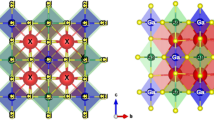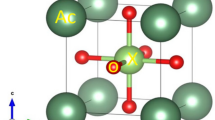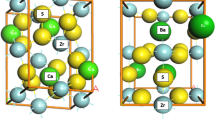Abstract
Three Zn(II) complexes of a new organic compound [(E)-4-methyl-N1-((E)-4-methyl-6-(p-tolylimino) cyclohex-3-en-1-ylidene)-N2-(p-tolyl) benzene-1, 2-diamine] (HMBD) were prepared and characterized by various techniques, including Fourier transform infrared (FTIR), UV–visible measurements, 1H-NMR, X-ray diffraction (XRD), and scanning electron microscopy (SEM). The data revealed that the HMBD ligand has an ONS tridentate-forming structure, while the complex of HMBD with zinc metal has a distorted octahedral structure, providing sp3d2 hybridization type. The geometry, HOMO, LUMO, polarizability, and other energetic parameters were evaluated by density functional theory (DFT) on Materials Studio package. Optical band gap (Eg) was estimated by DFT theory and optical properties for [Zn(MBD)(Cl)(H2O)2].2H2O (1), [Zn(MBD)](NO3)2H2O].2H2O (2), and [Zn(MBD)(CH3COO)(H2O)].3H2O (3) thin films as well, revealing that [Zn(MBD)(CH3COO)(H2O)].3H2O (3) thin film has the smallest energy gap and can be considered a highly efficient photovoltaic material. The resulting band gap energy values from both methods were found to be close to each other. Thin films of the ligand and zinc complexes were successfully fabricated by spin coating method. The optical constants, refractive index (n), and the absorption index (k) over the spectral range of the thin films were determined.













Similar content being viewed by others
References
Martinez MA, Herrero J, Gutierrez MT (1997). Sol Energy Mater Sol Cells 45(1):75–86
Fardousi M, Hossain MF, Islam MS, Ruslan SR (2013). J Mod Sci Techn 1(1):126–134
Sankar G, Claude A, Sathya S, Poiyamozh A (2013). Adv Appl Sci Res 4(6):13–20
Lennon C, Kodama R, Chang Y, Sivanathan S, Deshpande M (2008). J Electron Mater 37:9
Park YR, Jung D, Kim KC, Suh SJ, Park TS, Kim YS (2009). J Electron 23:2–4
Patil PS (1999). Mater Chem Phys 59(3):85–198
Krunks K, Bijakina O, Mikli V, Varema T, Mellikov E (1999). Phys Scr T79:209
Hussein HF, Shabeeb GM, Hashim SS (2011). J Mater Env Sci 2(4):423–426
Ohyama M, Kozuka H, Yoko T (1997). Thin Solid Films 30(1):78–85
Xian CJ, Ahn JK, Seong NJ, Yoon SG, Jang KH, Park WH (2008). J Phys 41(21):215107
Panigrahi S, Waugh S, Rout SK, Hassan AK, Ray AK (2004). Indian J Phys 78(8):823–826
Chakraborty M, Chowdhury D (2003). J Chem Educ 80(7):806
Forrest SR, Fellow (2000). IEEE J Quantum Elect 6(6):1072–1083
Forrest SR (1997). Chem Rev 97:1793
Zoromba M Sh, Hosny NM (2015). J Therm Anal Calorim 119(1):605–611
Hosny NM, Zoromba MS, Samir G, Alghool S (2016). J Mol Struct 1122:117–122
Zoromba MS, El-Ghamaz NA, Alghool S (2015). J Inorg Organomet Polym 25:955–963
Slimane AB, Al-Hossainy AF, Zoromba MS (2018). J Mater Sci Mater Electron:1–15
Zoromba MS, Alghool S, Abdel-Hamid S, Bassyouni M, Abdel-Aziz M (2016). Polym Adv Technol. https://doi.org/10.1002/pat.3987
Zoromba MS, Nasser A, Ghamaz E (2016). Mater Express 6:5
Badr AM, El-Amin AA, Al-Hossainy AF (2008). J Phys Chem C 112(36):14188–14195
Luna-Martinez JF, Hernandez-Uresti DB (2011). Carbohydr Polym 84:566–570
El Sayed AM, El-Gamal S, Morsi WM, Mohammed G (2015). J Mater Sci 50:4717–4728
Zoromba MS (2017). Spectrochim Acta A Mol Biomol Spectrosc 187:61–67
Al-Hossainy AF, Zoromba MS (2018). J Mol Struct 1156:83–90
Wu X, Ray AK (2002) Density-functional study of water adsorption on the PuO2 (110) surface. Phys Rev B Condens Matter 65:85403–85409
Modeling and Simulation Solutions for Chemicals and Materials Research, Materials Studio (Version 5.0), Accelrys software Inc., San Diego, USA, 2009
Hehre WJ, Radom L, Schlyer PVR, Pople JA (1986) Ab initio molecular orbital theory. Wiley, New York
Kessi A, Delley B (1998) Density functional crystal vs. cluster models as applied to zeolites. Int J Quantum Chem 68:135–144
Hammer B, Hansen LB, Nørskov JK (1999) Improved adsorption energetics within density-functional theory using revised Perdew-Burke-Ernzerhof functionals. Phys Rev B Condens Matter 59:7413
Matveev A, Staufer M, Mayer M, Rösch N (1999) Density functional study of small molecules and transition-metal carbonyls using revised PBE functionals. Int J Quantum Chem 75:863–873
Badr AM, EL-Amin AA, Al-Hossainy AF (2006). Eur Phys J B 53(4):439–448
Henderson MJ, Hillmana AR, Vieil E (1998). J Electroanal Chem 454(1–2):1–8
Karidi K, Garoufis A, Hadjiliadis N, Lutz M, Spek AL, Reedijk J (2006). Inorg Chem 45(25):10282–10292
Elsayed SA, Butler IS, Claude BJ, Mostafa SI (2015). Transit Met Chem 40(2):179–187
Popovic Z, Calogovic DM, Hasic J, Topic DV (1999). Inorg Chim Acta 285:208
Soliman IM, El-Nahass MM, Mansou Y (2016). Solid State Commun 225:17–21
Nakamoto K (1986) Infrared and Raman spectra of inorganic and coordination compounds, 4th edn. Wiley, New York
Colthup NB, Daly LH, Wiberley SE (1975) Introduction to infrared and Raman spectroscopy. Academic Press, New York
Andrade EM, Molina FV, Florit MI, Posadas D (1996). J Electronal Chem 419(1):15–21
Axelson JC, Gonzalez MI, Meihaus KR, Chang CJ, Long JR (2016). Inorg Chem 55(15):7527–7534
El-Asmy HA, Butler IS, Mouhri ZS, Jean-Claude BJ, Emmam MS, Mostafa SI (2014). J Mol Struct 1059:193–201
El-Morsy FA, Jean-Claude BJ, Butler IS, El-Sayed SA, Mostafa SI (2014). Inorg Chim Acta 423:144–155
El-Nahass MM, Zeyada HM, Aziz MS, El-Ghamaz NA (2004). Opt Mater 27(3):491–498
Hassan FM, Al-Hossainy AF, Mohamed AE (2009). Phosphorus Sulfur Silicon 184:2996–3022
Honle W, Schnering HG (1981). Z Krist 155:307–314 Zur Struktur von LiP und KSb, Locality: synthetic_database_code_amcsd 0018970
Smyth JR (1973). Am Mineral 58:636–648 An orthopyroxene structure up to 850 C, T = 20 C_database_code_amcsd 0000362
Kyono A, Kimata M (2004) Structural variations induced by difference of the inert pair effect in the stibnite-bismuthinite solid solution series (Sb,Bi)2S3. Am Mineral 89:932–940 Sample: Sb0.387Bi1.613S3 _database_code_amcsd 0003559
Hatakeyama T, Quinn FX (1999) Thermal analysis: fundamentals and applications to polymer science, National Institute of Materials and Chemical Research, John Wiley & Sons: Chichester, UK
Parr RG, Yang W (1989) Density-functional theory of atoms and molecules, vol. 16 of International series of monographs on chemistry, in, Oxford University Press, New York
Govindarajan M, Periandy S, Carthigayen K (2012) FT-IR and FT-Raman spectra, thermo dynamical behavior, HOMO and LUMO, UV, NLO properties, computed frequency estimation analysis and electronic structure calculations on α-bromotoluene. Spectrochim Acta A Mol Biomol Spectrosc 97:411–422
Rakha T, El-Gammal O, Metwally H, El-Reash GA (2014) Synthesis, characterization, DFT and biological studies of (Z)-N′-(2-oxoindolin-3-ylidene) picolinohydrazide and its Co (II), Ni (II) and Cu (II) complexes. J Mol Struct 1062:96–109
Domingo LR, Aurell MJ, Pérez P, Contreras R (2002) Quantitative characterization of the global electrophilicity power of common diene/dienophile pairs in Diels–Alder reactions. Tetrahedron 58(22):4417–4423
Padmanabhan J, Parthasarathi R, Subramanian V, Chattaraj PK (2007) Electrophilicity-based charge transfer descriptor. J Phys Chem A 111(7):1358–1361
Yang W, Parr RG (1985) Hardness, softness, and the Fukui function in the electronic theory of metals and catalysis. Proc Natl Acad Sci USA 82:6723–6726
Parr RG, Szentpaly LV, Liu S (1999). Electrophilicity index, JACS 121:1922–1924
Politzer P, Truhlar DG (2013) Chemical applications of atomic and molecular electrostatic potentials: reactivity, structure, scattering, and energetics of organic, inorganic, and biological systems, Springer Science & Business Media, LLD, New York
Mulliken RS (1955) Electronic population analysis on LCAO–MO molecular wave functions. J Chem Phys 23:1833–1840
Awad IM, Hassan FM, Mohamed AE, Al-Hossainy AF (2004). Phosphorus Sulfur Silicon 179:1–16
Zhou ZH, Wan HL, Tsai KR (2000). Inorg Chem 39:59
Kittel C (ed) (1996) Introduction to solid state physics, seventh ed. John Wiley & Sons, Inc, New York
Fenn M, Akuetey G, Donovan PE (1998) Electrical resistivity of Cu and Nb thin films. J Phys Condens Matter 10:1707–1720
Leontie L, Roman M, Brinza F, Podaru C, Rusu GI (2003). Synth Met 138:157
Leontie L, Roman M, Căplănus I, Rusu GI (2002). Prog Org Coat 44:287
Ibrahim A, Al-Hossainy AF (2015). Synth Met 209:389–398
Al-Hossainy AF, Abd-Elmageed AAI, Ibrahim AT (2015). Arab J Chem. https://doi.org/10.1016/j.arabjc.2015.06.020
Al-Hossainy AF, Ibrahim A (2015). Mater Sci Semicond Process 38:13–23
Author information
Authors and Affiliations
Corresponding authors
Ethics declarations
Conflict of interest
The authors declare that there are no conflicts of interest.
Additional information
Publisher’s note
Springer Nature remains neutral with regard to jurisdictional claims in published maps and institutional affiliations.
Highlights
1- Synthesis of Zn(II) complexes of a new organic compound (HMBD).
2- Characterization of HMBD powder complexes and thin films by various techniques including FT-IR, UVVisible measurements, 1H-NMR, XRD and SEM.
3- The geometry, HOMO, LUMO, polarizability and other energetic parameters were evaluated by DFT.
4- Thin film of the ligand and zinc complexes is successfully fabricated by spin coating method.
5- The optical constants, refractive index, (n), and the absorption index, (k), over the spectral range of the thin films are determined.
Rights and permissions
About this article
Cite this article
Al-Hossainy, A.F., Zoromba, M.S., El-Gammal, O.A. et al. Density functional theory for investigation of optical and spectroscopic properties of zinc-quinonoid complexes as semiconductor materials. Struct Chem 30, 1365–1380 (2019). https://doi.org/10.1007/s11224-019-1289-3
Received:
Accepted:
Published:
Issue Date:
DOI: https://doi.org/10.1007/s11224-019-1289-3




